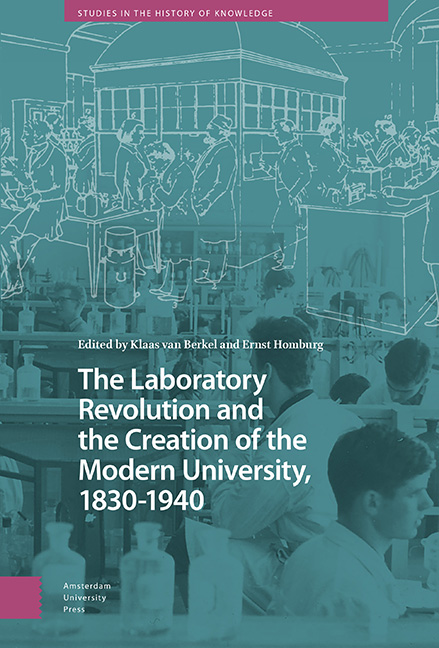1 - The Joint Emergence of the Teaching-Research Laboratory and the Modern University: An Introduction
Published online by Cambridge University Press: 29 November 2023
Summary
Abstract
The tremendous impact of the Laboratory Revolution on the universities as centres of science and learning has thus far received too little attention. Yet the rise of the modern teaching and research laboratory within the university dramatically changed the outlook, the social structure, and the very idea of the university. This introduction offers a brief survey of the long road to the Laboratory Revolution, a review of recent historiography, and an outline of each of the contributions to this volume.
Keywords: Laboratory Revolution, university science, historiography, Justus Liebig, scientific ethos
Introduction
In the public imagination a scientist today is someone in a laboratory. A man or a woman in a white coat, with safety glasses and a tube in his or her hand. Over the course of the nineteenth century, the laboratory became the ultimate place where new knowledge is created. By the end of that century, the former workplace of chemists, situated on the fringes of the learned world, had turned into a central and indispensable element in the infrastructure of science and science education. A true ‘laboratory revolution’ had taken place, changing both the sciences and the universities.
Over the past decades, the rise of the laboratory, its growth in numbers, its architectural presentation, and its internal organization have been studied by many historians. Another subject of detailed research has been the tremendous changes laboratory research brought about in the kind of knowledge we strive for. One important but understudied aspect of the Laboratory Revolution, however, is the impact it had on the university as a centre of science and learning. Of course, not all laboratories were university laboratories. Private laboratories remained important for a long time, and today industrial and testing laboratories employ more researchers than university laboratories. But the rise of university laboratories deserves special treatment because it is there that new generations of researchers are trained and educated. In the nineteenth century simple lecture halls gave way to purpose-built laboratories, which would dominate the cityscape. Even academic disciplines that ostensibly needed no laboratory space to develop, such as astronomy and linguistics, each acquired their own laboratories.
- Type
- Chapter
- Information
- Publisher: Amsterdam University PressPrint publication year: 2023

